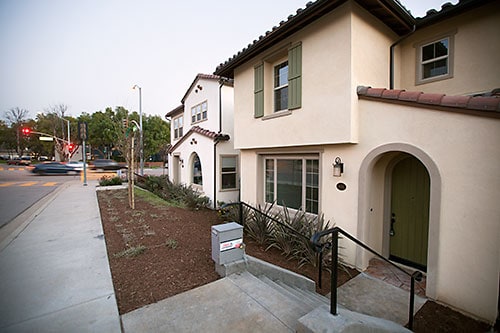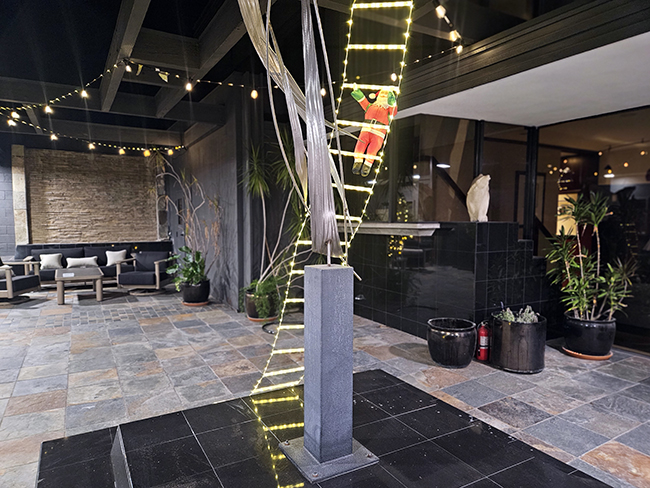Timing is critical when home buying

After years of stagnant to slow growth, the Claremont real estate market is hot. But how long prices will continue to climb is another question.
Homebuyers who were hesitant a year ago are now motivated due to rising prices and mortgage interest rates, which are still historically low, though they have recently started to increase. This assessment was the consensus from a roomful of real estate professionals recently at Wheeler Steffen Sotheby’s International Realty, and shared by longtime Claremont realtor Carol Curtis of Curtis Real Estate. Claremont homes are selling quickly as inventory of available homes, 76 as of July 25, remains relatively low, thus driving competition.
“There is a lot of pent-up demand,” said Ms. Curtis, “but there is also a lot of fear. There is talk of interest rates going up and everyone wants to buy at the bottom of the market before it heads back upwards.”
Another factor driving demand is competition from investors who often offer cash deals. Instead of placing money in savings accounts with low returns, they are instead placing their investments in real estate, and flipping homes for a profit, according to Ms. Curtis.
“If you are an investor, there really isn’t anywhere to park your money. If you put it in a CD [Certificate of Deposit], you won’t even get one percent,” she said. “Real estate is an attractive investment with growth and income.”
A typical mid-priced home in Claremont, one offered below $750,000, receives multiple offers and sells quickly, often within one week or even days, realtors shared. For example, a home sold recently by broker associate Mason Prophet received 7 offers and sold for $500,000, which was $50,000 over the asking price. Furthermore, offers often come with fewer restrictions, such as appraisal contingencies in which the offer is withdrawn if the home appraises too low.
The median single-family home price in Claremont for June 2013 was $589,000 with 32 sales; according to a Los Angeles Times chart released by the real estate information firm DataQuick. That reflects a price increase of 22.7 percent over June 2012. The median price for condominiums in Claremont was $378,000, with 8 sales, which reflects a 5.55 percent drop from a year ago. The median is the point at which half of the homes sell for more and half sell for less.
Prices for the first quarter of 2013 tell a slightly different story with the median single-family residence at $450,000 with 70 sales, a 9.9 percent increase from 2012, and the median condo at $372,000, up 48.8 percent, according to DataQuick.
Prospective homebuyers are rushing forward, eager to get a piece of the prized local housing stock. Dee Ann Estupinian, a senior loan consultant at Broadview Mortgage, says the rate of first-time homebuyers looking for loans has risen 40 percent over the past 18 months, mainly due to “confidence in the market.”
“Even those who haven’t been in the market for the past 10 years are trying to get out there,” Ms. Estupinian shared. “Everyone knows there is a bottom, and they don’t want to miss out.”
However, if rising interest rates helped motivate current buyers, realtors warn they could also become the spoiler. Overbidding and an abundance of cash buyers are making it harder for the average consumer to compete. And if rates and prices keep going up without an increase in wages, then Claremont could quickly become unaffordable to the average consumer, according to broker Paul Steffen.
“Don’t be surprised if rates go up to 6 percent or even 7 percent by next year,” said broker associate Geoff Hamill. “That is why it is a good time to buy right now.”
First-time homebuyers Alex Castellon and Jennifer Thieme were prompted to begin their house hunt several months ago, encouraged by the housing stock and affordable prices. However, as their search continued, they admit they began to lose their initial optimism.
“Looking at both the MLS (Multiple Listing Service) online and physically seeing houses with my real estate agent, I began to see that it is not a buyer’s market, but rather a seller’s market,” Mr. Castellon said. “With that being said, the homes that are available are grossly overpriced. Many of the homes that we have seen are listed in ‘as is’ condition, the seller will not make any repairs; As a first-time home buyer, I don’t want to overpay for my future home.”
Mr. Castellon added that a number of the homes needed more than just minor repairs.
“I don’t mind cosmetic work but replacing worn-out countertops, doors, stained carpets, holes in walls and botchy patch-up jobs does not constitute the prices that some sellers are asking for,” he said.
For many, like Mr. Castellon and Ms. Thieme, the affordability window may be quickly closing. According to a report from the California Association of Realtors, only 44 percent of California residents can afford the median-priced home as of the first quarter of 2013. The affordability rate is down significantly from 56 percent a year earlier, and it is likely that the second quarter 2013 data will show a further slide.
Another concern expressed by Mr. Hamill is the recent approval of multiple townhouse-style developments in Claremont, 2 of which have already begun construction. Many potential Claremont homebuyers are older people who already live here but who want to downsize. These buyers are seeking small, single-story homes that will be easier to navigate as they grow older. Mr. Hamill would like to see 10 to 15 percent of new construction be small, single-story homes.
Ms. Curtis, on the other hand, remains optimistic. While much of Claremont is comprised of single-family homes, she maintains that condos in Claremont are in high demand.
For instance, Ms. Curtis says she constantly has people coming into her office asking about the Village Walk condos, located next to the Claremont Packing House. She insists that providing prospective buyers with more options is not a bad thing.
“It’s a good move to have more [condos and townhomes] on the market,” Ms. Curtis said. “Hopefully, they all won’t hit the market at once, but I don’t think it’ll have a huge impact.”
Still, local real estate professionals are feeling good about the current market even if they do have concerns about the sudden rise. Recalling the out-of-control market that peaked locally in the summer of 2007, only to come crashing down, Mr. Prophet commented, “What we need is a healthy market with slow growth and without a bubble.”
As lenders become more careful, however, Ms. Curtis sets aside fear of another housing bubble.
“Real estate is cyclical, there are always ups and downs,” she said. “We often forget that.”
—Beth Hartnett and Steven Felschundneff










0 Comments